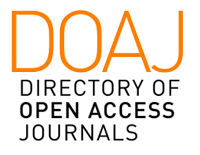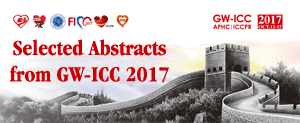[GW28-e0646]
Echinacoside protects against high glucose-induced oxidative stress in vascular endothelial cells through Nrf2/HO-1 dependent pathway
Jiahong Xue Zhu canzhan Anqi Song Jiahong Xue
Department of Cardiology, Second Affiliated Hospital of Xi’an Jiaotong University
Objectives: Oxidative stress plays an important factor that is related to endothelial dysfunction in diabetes. Echinacoside, a compound derived from the medicinal plants Cistanche and Echinacea, has been found to effectively inhibit oxidative stress formation. The present study aimed to further implore the protective role of echinacoside in endothelial injury induced by high glucose and whether the endogenous antioxidant gene regulator, nuclear factor erythroid-2-related factor 2(Nrf2)/ heme oxygenase 1(HO-1)was involved in the effect of echinacoside against oxidative stress.
Methods: Human umbilical vein endothelial cells(HUVECs)were treated with D-glucose(5.6 mM and 30.0 mM) with or without echinacoside (200 μM) for 24 to72h. Intracellular reactive oxygen species (ROS) was measured using dihydroethidium (DHE) fluorescence. The nitric oxide synthase (NOS) activity and phosph-eNOS expression were measured by means of scintillation counting and western blot respectively. To determine Nrf2 activation,Nrf2 protein expressions in cytoplasm and nucleus were evaluated and Nrf2-antioxidant response element (ARE) binding activity was determined by electromobility shift assay. Furthermore, real time PCR and western blot were further employed to measure the expression of HO-1, one of antioxidative target gene of Nrf2.
Results: Compared with normal glucose, 30.0 mM high glucose significantly induced ROS production, which was significantly reversed by pretreatment echinacoside in high glucose cultured endothelial cells. Furthermore, decreased NOS activity and phosph-eNOS protein expression by high glucose were also attenuated by 50% and 40% respectively by echinacoside in endothelial cells. In addition, it has been found that echinacoside induced nuclear translocation of Nrf2 protein after 24 h and reduced nuclear protein levels of Fyn, a repressor of the antioxidant response element. Similarly, Nrf2-ARE binding activity was increased, which was along with increased HO-1 mRNA and protein expressions by 40% in echinacoside treated endothelial cells. However, the role of echinacoside in high glucose-induced oxidative stress formation was blocked by Nrf2 siRNA. Similarly, the effect of echinacoside on NOS activity and phosph-eNOS protein expression was also impeded by Nrf2 siRNA. Finally, it was also found that echinacoside promoted phosphorylation of Akt and increased Nrf2 transcription action by echinacoside was blocked by the Akt inhibitor MK2206 and Akt negative regulators PTEN, which was accompanied by increase in nuclear accumulation of Fyn.
Conclusions: It is suggested that echinacoside protects against high glucose-induced vascular endothelial dysfunction, which is associated with Nrf2/HO-1-dependent antioxidative passway, and regulated by Akt phosphorylation. It may be a useful therapeutic potential in preventing from endothelial dysfunction in diabetes.














